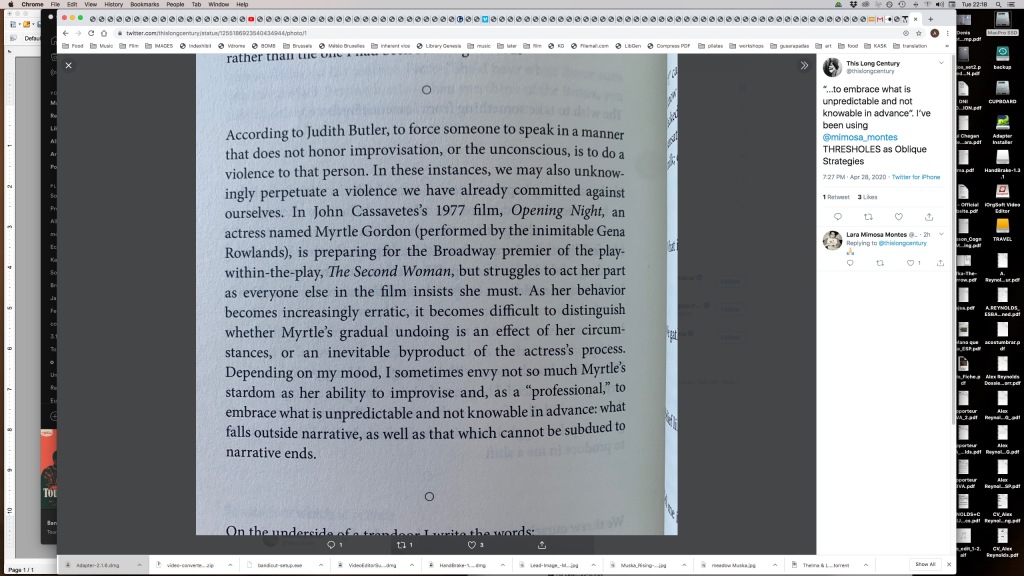Working with post-Cagean aesthetics yet advancing them within a Diné/Navajo context, Chacon’s work suggests that notation is an imposition onto sound comparable to colonialism’s imposition onto the land.
Report (2001/15) extends Chacon’s critique of the constraints of conventional musical objects. Here, he uses firearms as instruments—indicated both in framed prints of its scores and a single-channel video documenting a performance of the piece at a firing range—to satirize the obedient, military training of chamber musicians while pointing at the broader violence inscribed in transcription itself, which flattens the multiplicity of sound to a defined range of signs and brings all unstable variations of performance back to a stable and controlled form. Instead, Chacon’s oblong, constellated drawings tend to collapse staff sheets into a lusher topology. Reminiscent of Fluxus event scores or Pauline Oliveros’s sonic meditations, works like Duet (2000) and Vertical Neighbors (2024), the latter painted as a graphic mural on an exterior terrace wall, instruct performers to “play” non-sonorous elements like silence, gesture, concept, and feeling.
… he suggests that the limits of traditional notation point to a resistance to variation typical of the colonial legacy. But if scores are sets of rules, Chacon proposes that they might also allow for new modes of collaboration and inhabitation.



